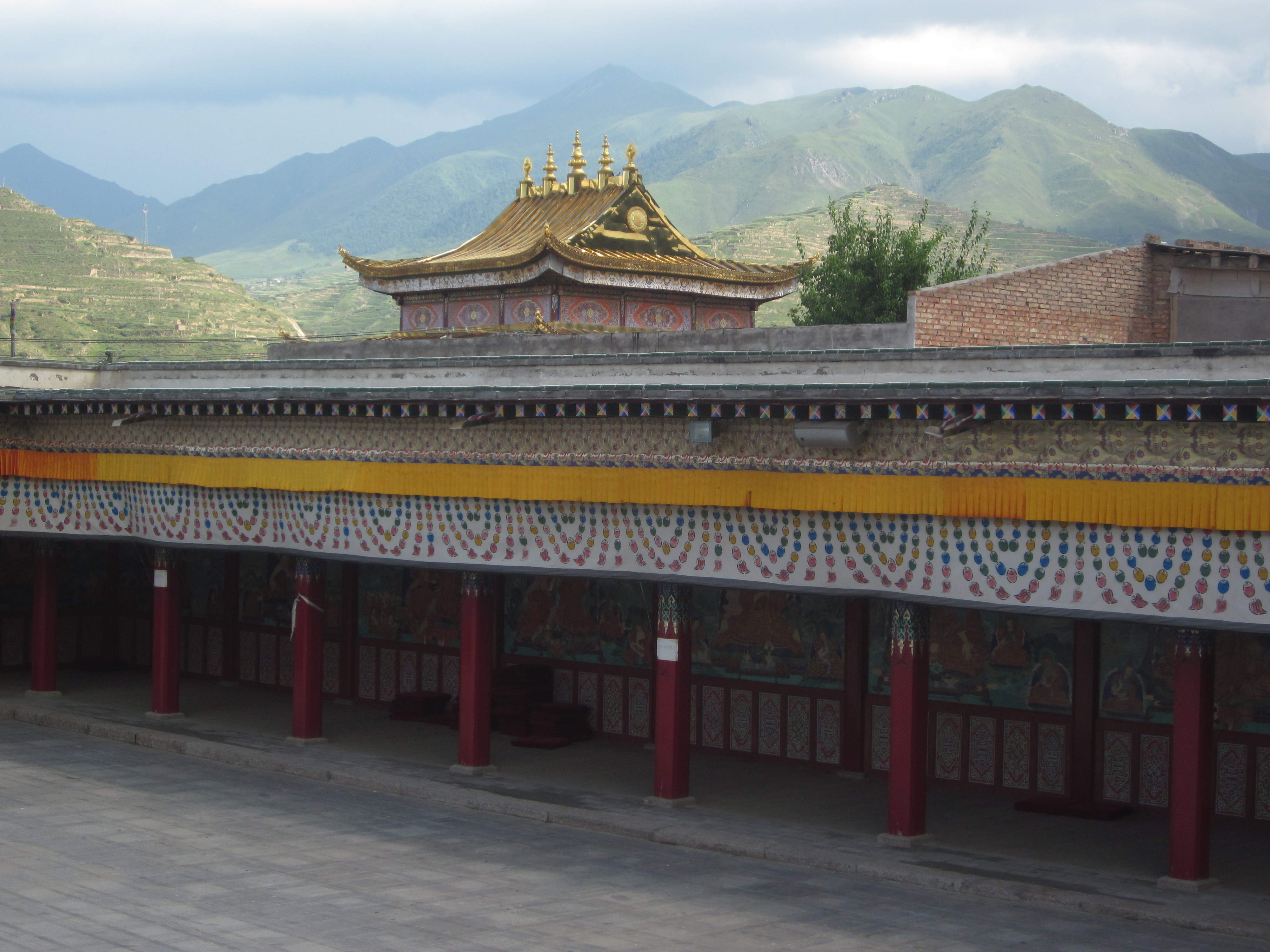Rongwo Monastery on:
[Wikipedia]
[Google]
[Amazon]
 Rongwo Monastery (, formally , ), is a Tibetan Buddhist monastery in
Rongwo Monastery (, formally , ), is a Tibetan Buddhist monastery in
 Rongwo Monastery was initially established as a three monastery site in 1341 in by Rongwo Samten
Rongwo Monastery was initially established as a three monastery site in 1341 in by Rongwo Samten
 Rongwo Monastery (, formally , ), is a Tibetan Buddhist monastery in
Rongwo Monastery (, formally , ), is a Tibetan Buddhist monastery in Tongren County
Tongren (; zh, c=同仁, p=Tóngrén), known to Tibetans as Rebgong () in the historic region of Amdo, is the capital and second smallest administrative subdivision by area within Huangnan Tibetan Autonomous Prefecture in Qinghai, China.
The cit ...
, Huangnan Tibetan Autonomous Prefecture
Huangnan Tibetan Autonomous Prefecture ( zh, s=黄南藏族自治州, t=黃南藏族自治州 , p=Huángnán Zàngzú Zìzhìzhōu; ) is an autonomous prefecture of eastern Qinghai, northwest China, bordering Gansu to the east. The prefecture has ...
, Qinghai
Qinghai is an inland Provinces of China, province in Northwestern China. It is the largest provinces of China, province of China (excluding autonomous regions) by area and has the third smallest population. Its capital and largest city is Xin ...
, China. It is from Xining
Xining is the Capital (political), capital and most populous city of Qinghai province in western China and the largest city on the Tibetan Plateau. As of the 2020 census, it had 2,467,965 inhabitants (2,208,708 as of 2010), of whom 1,954,795 l ...
.
Name
The monastery is named after the Rongwo River upon which it is located.History
 Rongwo Monastery was initially established as a three monastery site in 1341 in by Rongwo Samten
Rongwo Monastery was initially established as a three monastery site in 1341 in by Rongwo Samten Rinpoche
Rinpoche, also spelled Rimpoche (), is an honorific term used in the Tibetan language. It literally means "precious one", and may refer to a person, place, or thing—like the words "gem" or "jewel" (Sanskrit: '' Ratna'').
The word consists of '' ...
. Samten’s younger brother was the architect and designer of the monasteries. The first monastery built was the Temple of 3 Buddhas and then the Golden Temple and other temples. Shartsang Kaldan Gyatso (1607-1677) is recognized as the 1st re-incarnation of Rongwo Samten Rinpoche and was the founder of the current monastery on the temples' sites. The 8th re-incarnation of Shartsang Rinpoche was recognized and installed in October 1991. Yarba Chogyi built the prayer hall, the Victory Stupa and the stupas at the 4 corners of the monastery, had the sayings of Buddha written in gold, and commissioned the statues of Je Tsongkhapa. Shartsang Kaldan Gyatso established the first monastic college, Tsennyi Tratsang, in which Buddhist dialectics, vinaya
The Vinaya (Pali and Sanskrit: विनय) refers to numerous monastic rules and ethical precepts for fully ordained monks and nuns of Buddhist Sanghas (community of like-minded ''sramanas''). These sets of ethical rules and guidelines devel ...
, Madhyamika
Madhyamaka ("middle way" or "centrism"; ; ; Tibetan: དབུ་མ་པ་ ; ''dbu ma pa''), otherwise known as Śūnyavāda ("the emptiness doctrine") and Niḥsvabhāvavāda ("the no ''svabhāva'' doctrine"), refers to a tradition of Bud ...
philosophy, Prajnaparamita
file:Medicine Buddha painted mandala with goddess Prajnaparamita in center, 19th century, Rubin.jpg, A Tibetan painting with a Prajñāpāramitā sūtra at the center of the mandala
Prajñāpāramitā means "the Perfection of Wisdom" or "Trans ...
, and Abhidharma
The Abhidharma are a collection of Buddhist texts dating from the 3rd century BCE onwards, which contain detailed scholastic presentations of doctrinal material appearing in the canonical Buddhist scriptures and commentaries. It also refers t ...
are still currently taught, in 1630. Following multiple subsequent re-incarnations, the 7th incarnation of Shartsang Rinpoche, Lobsang Trinley Longtok Gyatso, increased the number of colleges to the present: the Tsennyi Tratsang, the Gyamat Tratsang (tantric College, where tantric scriptures and practices are taught) and the Duikor Tratsang, a monastic college of the wheel of time that is also known as the College of Kalachakra
''Kālacakra'' () is a Polysemy, polysemic term in Vajrayana, Vajrayana Buddhism and Hinduism that means "wheel of time" or "time cycles". "''Kālacakra''" is also the name of a series of Buddhist texts and a major practice lineage in History of ...
, the 10 syllable mantra. This information was provided at the monastery in June 2006 and is translated from their official documents.
Footnotes
{{Authority control Tibetan Buddhist temples in Qinghai Gelug monasteries Amdo Major National Historical and Cultural Sites in Qinghai Buddhist temples in Huangnan Tibetan Autonomous Prefecture Buddhist monasteries in Qinghai